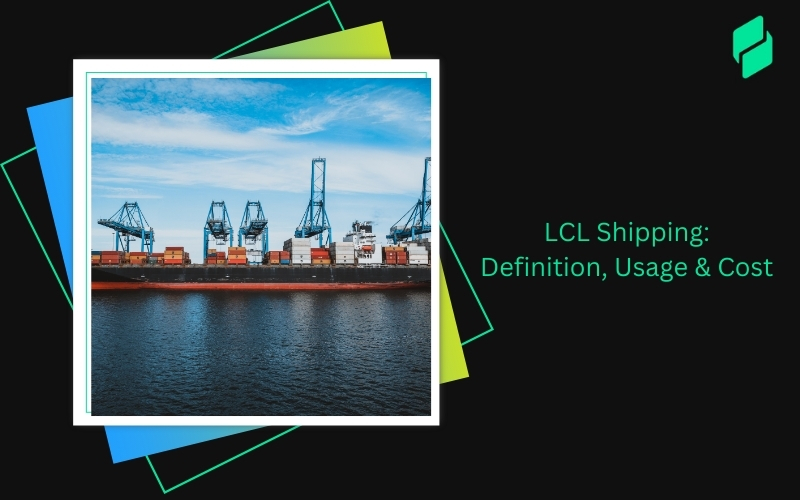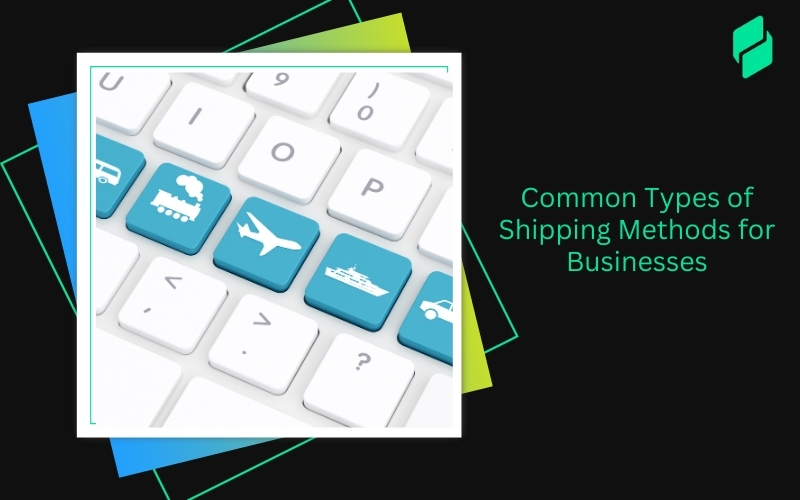Optimize your business: use unlimited savings with Pazago fulfilled now!
Get Started ->Did you know that the last mile often contributes more than half of a shipment's total logistics cost? This final stretch of delivery is critical for businesses moving goods across borders or within a country. For importers and exporters in India, understanding the complexities of last-mile delivery is essential to stay competitive in the global market.
In this article, we'll explore what makes the last mile so vital, the challenges it presents, and how technology and innovative solutions are transforming this space. By the end, you'll gain actionable insights to improve your approach to last mile logistics.
Let’s get started!
What is Last Mile Delivery?

Last-mile delivery is the final step in the supply chain, where products are moved from a distribution center to the customer's door. This stage is vital as it directly influences the customer's experience and satisfaction.
Unlike other stages of logistics, the last mile involves unique challenges. It often requires navigating urban traffic, meeting tight delivery deadlines, and addressing varied customer demands. Whether delivering to a bustling city or a remote rural area, the goal remains the same: ensuring the package reaches its destination quickly and efficiently. Last-mile delivery is even more significant in global trade.
With the basics of last-mile delivery in place, it's time to examine why this final stretch matters so much to businesses and consumers alike.
Also Read: Logistics Management with Software
Why is the Last Mile Delivery Important?

Last-mile delivery is pivotal in the overall logistics process because it is the final touchpoint between a business and its customer. A successful delivery at this stage is often the deciding factor in customer satisfaction and loyalty.
This stage carries significant weight due to several factors:
- Direct Customer Interaction: The last mile is where the customer experiences the outcome of the entire logistics process. A seamless delivery leaves a positive impression, while delays or errors can damage trust.
- Influence on Brand Perception: A company's reputation often depends on how well it handles the final delivery. Timely deliveries reflect professionalism and reliability.
- Cost Implications: Last-mile delivery is resource-intensive. High fuel prices, vehicle maintenance, and labor costs make it the most expensive leg of the journey. Businesses must optimize this stage to remain competitive.
- Evolving Expectations: Customers now expect faster deliveries, real-time tracking, and flexible options. Meeting these demands requires businesses to rethink and refine their strategies.
While last mile delivery plays a critical role in customer satisfaction, several challenges complicate its execution.
Also Read: Top Delivery Management Software Tools
The Challenges of Last Mile Delivery

The last mile of delivery is often considered the most complex and costly phase in logistics. Its distinct challenges make it a key area for businesses that want to enhance their supply chains. Here are the key obstacles that businesses face:
- High Costs
The last mile accounts for a large portion of overall logistics expenses. Factors like urban traffic congestion, fuel prices, and inefficiencies in route planning contribute to the high costs. In rural areas, the added expense of covering longer distances for fewer deliveries further escalates the cost.
- Traffic and Infrastructure Issues
Navigating crowded streets in densely populated cities can cause delays and increase operational inefficiencies. Conversely, in rural areas, underdeveloped infrastructure makes it harder to deliver goods on time.
- Rising Customer Expectations
Customers now demand faster, more transparent deliveries. Features like same-day or next-day shipping and real-time tracking have become standard. Meeting these expectations requires businesses to adopt innovative approaches and invest in better tools.
- Managing Delivery Density
Urban areas often have high delivery density, which can lead to bottlenecks and inefficiencies. Remote locations suffer from the opposite problem: low delivery density, which makes it harder to optimize costs.
- Environmental Concerns
As the focus on sustainability increases, businesses must find a balance between quick deliveries and environmentally friendly practices. Traditional delivery vehicles contribute to carbon emissions, putting pressure on companies to adopt greener alternatives.
While last mile delivery presents significant challenges, there are actionable strategies that can help overcome these obstacles.
Pazago addresses these challenges with features like route optimization, consolidated shipments, and efficient document management to reduce costs.
Also Read: Challenges and Solutions in Multimodal Logistics
Practical Strategies to Improve Last Mile Efficiency

Enhancing last-mile delivery efficiency requires a combination of strategic planning, technology adoption, and operational improvements. Here are actionable strategies to help businesses streamline this crucial stage of logistics:
- Optimize Routes with Technology
Investing in route optimization software ensures drivers take the most efficient paths, reducing travel time, cutting fuel costs, and improving delivery consistency.
- Consolidate Shipments
Grouping multiple deliveries in the same area minimizes trips and lowers expenses. Consolidation reduces costs in both urban and rural regions.
- Partner with Reliable 3PL Providers
Third-party logistics providers (3PLs) specialize in last-mile delivery and offer expertise, technology, and infrastructure to improve efficiency. Partnering with a reliable 3PL can help businesses overcome logistical challenges and scale operations.
- Use Local Fulfillment Centers
Positioning inventory closer to customers through smaller, strategically located warehouses speeds up deliveries and reduces transportation costs. This approach supports fast delivery options, such as same-day or next-day shipping.
- Implement Real-Time Tracking
Providing real-time visibility into delivery status improves communication with customers. It reduces uncertainty and ensures timely updates, enhancing the overall customer experience.
- Train and Motivate Delivery Teams
Empowering delivery personnel with training and incentives can significantly improve performance. Skilled and motivated drivers are more likely to meet deadlines and maintain high service standards.
- Embrace Alternative Delivery Options
Incorporating alternative delivery methods such as drones, autonomous vehicles, and parcel lockers helps businesses reach customers faster and more sustainably.
While traditional strategies remain essential, technology is rapidly reshaping the way last mile delivery is managed.
Also Read: Understanding The Importance And Strategies Of Retail Supply Chain Management
How Technology is Solving the Last Mile Puzzle

Innovative technologies are revolutionizing last-mile delivery and offering solutions to many businesses' challenges. By using these advancements, businesses can enhance efficiency, cut costs, and provide a better customer experience.
- Route Optimization
Smart route optimization tools use algorithms and real-time data to create efficient delivery routes. These tools help drivers avoid traffic, reduce fuel consumption, and complete deliveries faster.
- Real-Time Tracking
Real-time tracking systems provide visibility into the delivery process for both businesses and customers. Customers can monitor their package's location, while businesses can address delays and reroute deliveries if necessary.
- Predictive Analytics
Predictive analytics use historical data to forecast delivery times, manage resources, and anticipate potential delays. This proactive approach reduces uncertainty and enhances operational planning.
- Alternative Delivery Vehicles
Drones, electric vehicles (EVs), and autonomous delivery robots are reshaping last mile logistics. These solutions are both cost-efficient and environmentally friendly, supporting the increasing focus on sustainability.
- Delivery Apps and Communication Tools
User-friendly apps and communication platforms enable seamless interaction between customers and delivery personnel. Features like delivery time selection and live communication help improve customer satisfaction.
- Warehousing and Micro-Fulfillment
Technologies that optimize warehouse operations, such as automated sorting systems and micro-fulfillment centers, bring goods closer to customers, shorten delivery times, and enhance efficiency.
As technology continues to evolve, it’s important to look ahead at the emerging trends that will further impact last mile delivery in the coming years.
Also Read: Top Supply Chain Technologies: A Pazago Guide
Trends Shaping Last Mile Delivery in 2024

The world of logistics is constantly evolving, and last-mile delivery is no exception. Several key trends are reshaping how goods are delivered, pushing businesses to innovate and adapt.
- Sustainability in Delivery
Customers and businesses alike are placing greater emphasis on eco-friendly practices. The use of electric vehicles, carbon-neutral delivery programs, and reusable packaging is on the rise, reducing the environmental impact of last mile logistics.
- Hyper-Local Delivery Models
Hyper-local fulfillment centers and smaller warehouses are helping businesses bring inventory closer to customers, reducing delivery times and supporting faster options like same-day shipping.
- Collaboration and Asset Sharing
Partnerships between businesses and shared delivery networks are reducing costs and improving efficiency. These collaborations allow smaller companies to compete effectively in the global market.
By anticipating these trends, businesses can prepare for the future and enhance the customer experience.
Also Read: Emerging Logistics Tech Trends and Their Meaning
Pazago: Redefining Last-Mile Delivery and Cross-Border Logistics

Pazago is revolutionizing logistics in India by offering a digital platform that simplifies the entire trade journey. From procurement to fulfillment, Pazago ensures every stage of logistics is efficient, reliable, and transparent. Its advanced features make it a trusted partner for businesses aiming to streamline last-mile delivery and beyond.
How Pazago Enhances Last Mile Logistics
Pazago ensures that every stage of logistics, including the last mile, is handled with precision, reliability, and customer focus. Here's how Pazago optimizes last mile logistics:
- Last Mile Logistics: Comprehensive delivery service from origin to destination for a hassle-free experience.
- Full Container Load (FCL) Services: These services efficiently transport goods in bulk, minimizing costs and maximizing safety.
- Trusted Carrier Partnerships: Collaborations with reliable carriers guarantee safe and timely deliveries.
- Real-Time Tracking: Provides visibility into shipment status to enhance transparency and customer confidence.
- Specialized Cargo Handling: Tailored solutions for unique cargo needs, including perishable, hazardous, and oversized goods.
- Customs Clearance Assistance: Streamlines regulatory processes for faster, more accurate delivery outcomes.
- Flexible Transportation Options: Combines road, ocean, and multimodal methods for maximum efficiency.
Comprehensive Features
Pazago doesn't stop at last-mile delivery—it addresses challenges across the entire supply chain:
- Efficient Document Management: Centralize trade documents, enabling easy creation, access, and updates for smoother logistics workflows.
- Seamless Financial Solutions: Receive foreign exchange payments within three hours without payment limits, ensuring uninterrupted trade operations.
- Quality Inspections: With Pazago, businesses can arrange thorough inspections directly on the platform, seamlessly integrating this step into their workflow.
- Reliable Insurance: Manage cargo insurance effortlessly with Pazago's digital tools.
- Stay Informed: Receive real-time updates and actionable insights through Pazago Insider Alerts and Insider News.
With its holistic approach, Pazago solves last-mile delivery challenges and optimizes the entire supply chain. Its features empower businesses to improve efficiency, reduce costs, and deliver exceptional service.
Conclusion
Last-mile delivery is crucial for building customer trust and ensuring operational success. Businesses can achieve seamless logistics by tackling their challenges with innovative strategies and technology.
Pazago simplifies the entire supply chain, offering tools such as real-time tracking, proactive planning, and centralized communication. It's the ideal partner for streamlining logistics and enhancing delivery efficiency.
Ready to transform your logistics? Visit Pazago today to explore how their solutions can elevate your business.


.png)








